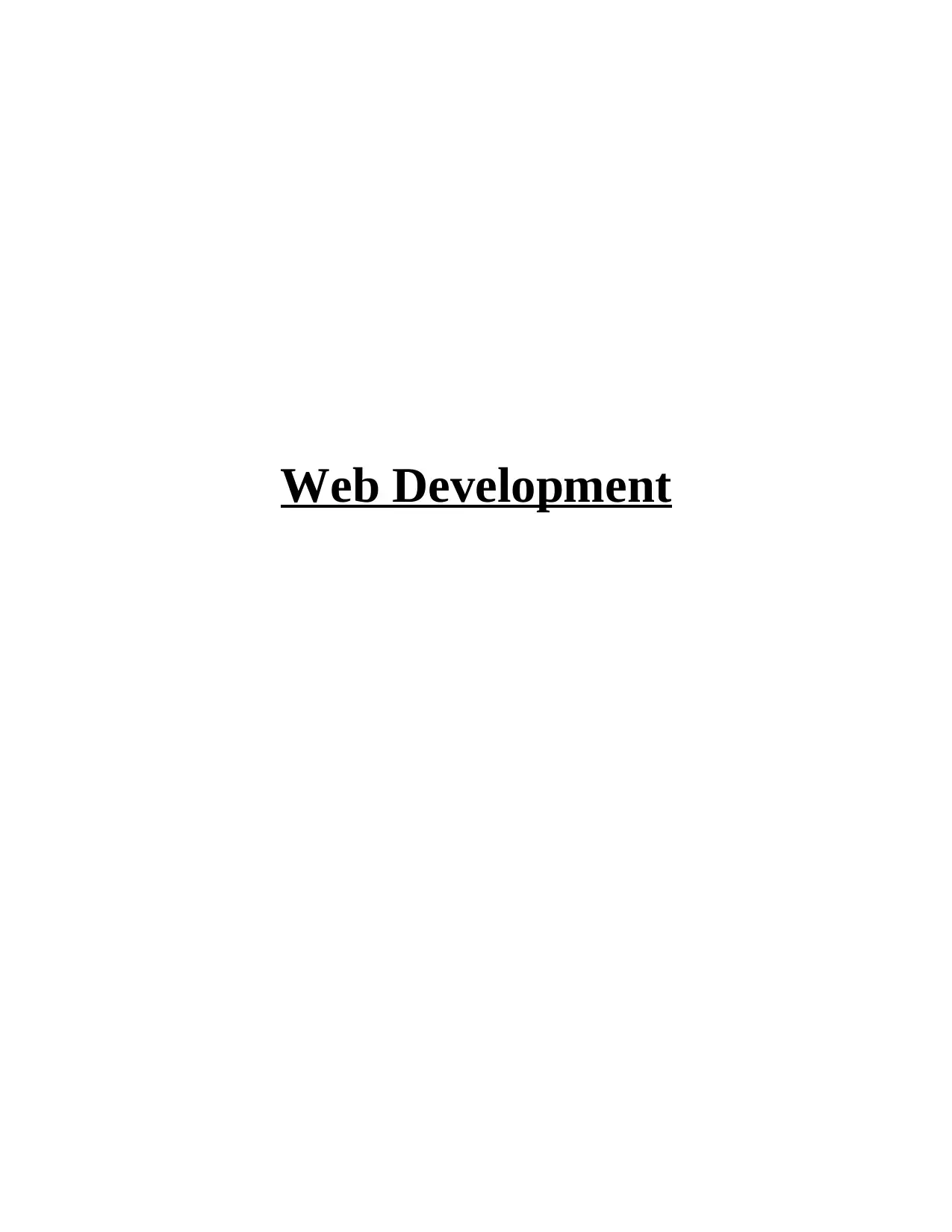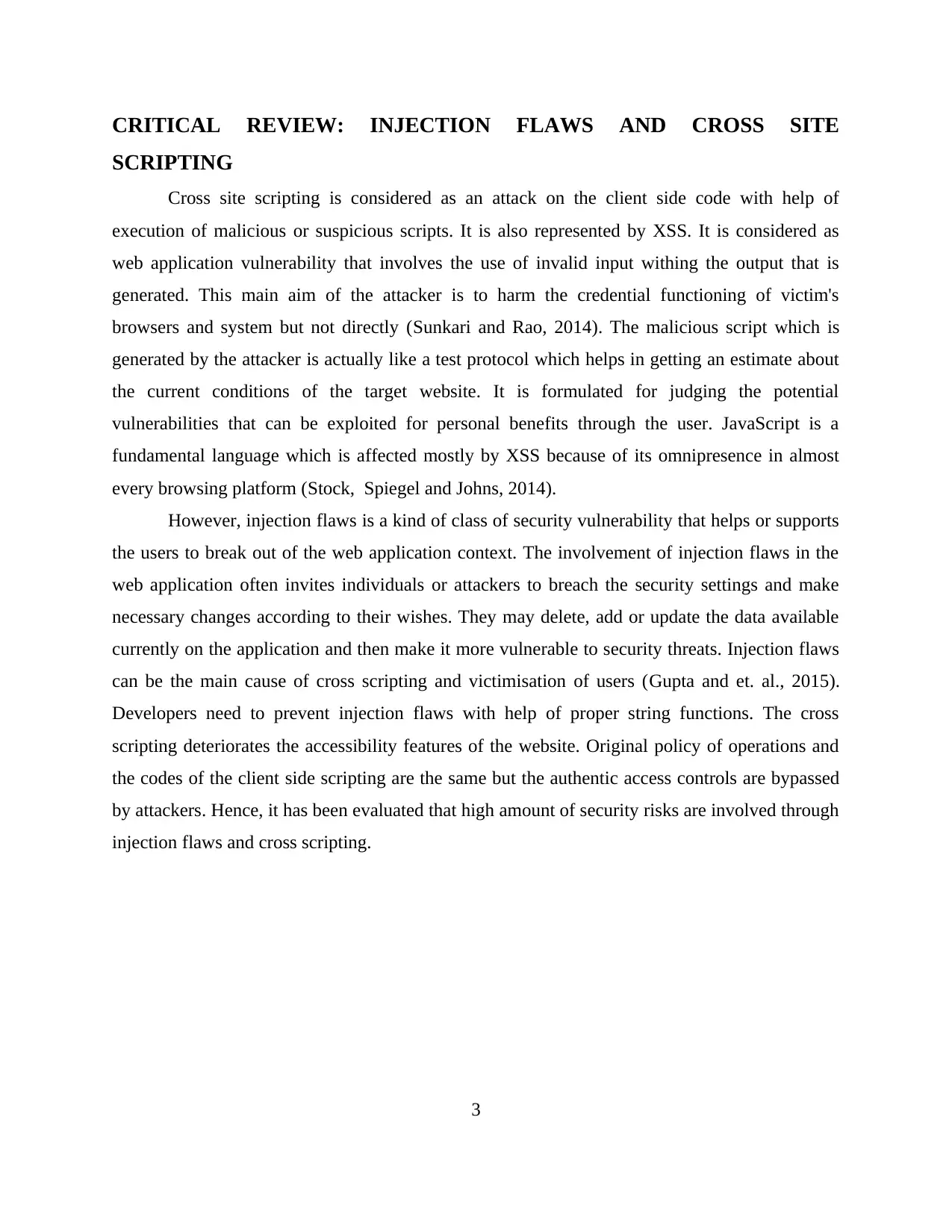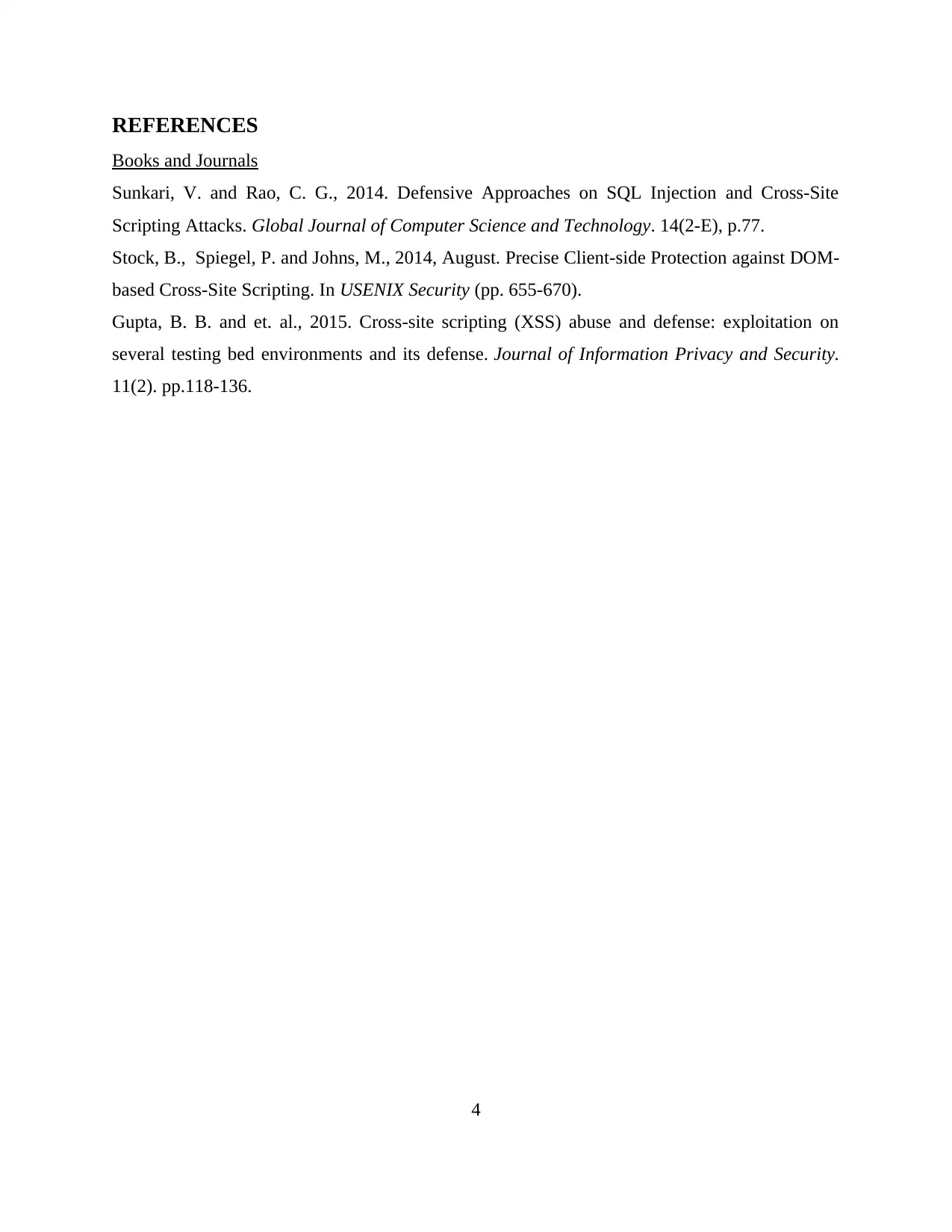Web Development 2: Critical Review of Injection Flaws and XSS
VerifiedAdded on 2023/04/04
|4
|395
|232
Report
AI Summary
This report provides a critical review of injection flaws and cross-site scripting (XSS) vulnerabilities in web applications. Cross-site scripting is defined as a client-side attack involving the execution of malicious scripts, exploiting vulnerabilities by using invalid input within the generated output, primarily targeting JavaScript due to its widespread use. Injection flaws, on the other hand, allow attackers to bypass web application context security, potentially leading to data manipulation and increased vulnerability to security threats. The report emphasizes the need for developers to prevent injection flaws through proper string functions to avoid accessibility deterioration and security risks, highlighting that while the original operation policies and client-side scripting codes remain intact, attackers can bypass authentic access controls. The document concludes that both injection flaws and cross-site scripting pose significant security risks to web applications and their users.
1 out of 4










![[object Object]](/_next/static/media/star-bottom.7253800d.svg)